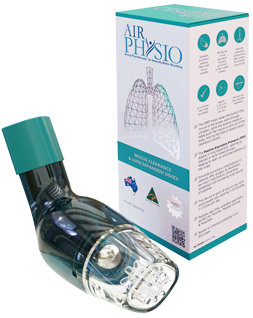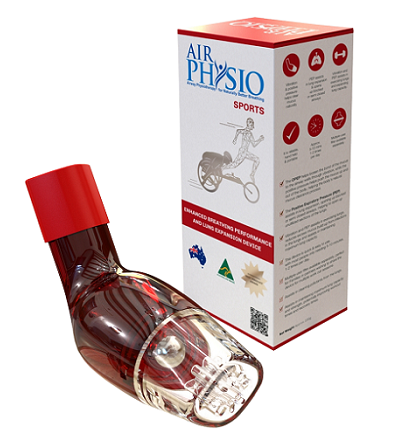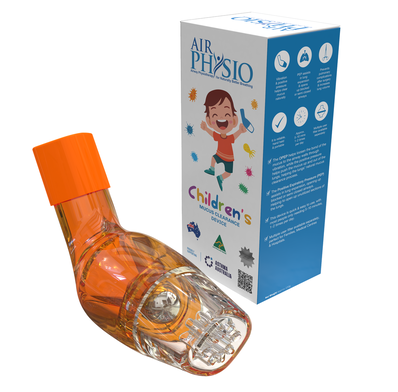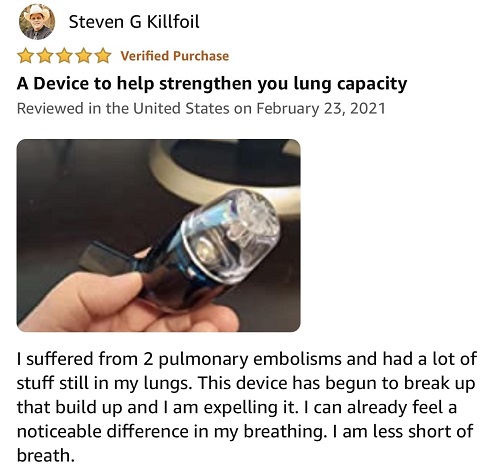Nebulizer vs Inhaler – Understanding the Difference
Inhalers and nebulizers are the go-to devices for asthmatic people to effectively induce medicine into their lungs. These medicines keep asthma flare-ups at bay or prevent impending attacks from becoming adverse. Grasping the comparison of a nebulizer vs inhaler ushers in the proper treatment of this condition. Without further ado, let’s explore the differences between the two devices.
WHAT IS AN INHALER?
It’s a compact handheld device used to administer medicine directly into the lungs. The medicine is a spray or mist that the user releases with every breath they take. In contrast to a liquid or pills that must be consumed orally, asthma medication works in a jiffy to unclog the airways for faster relief. Inhalers come in different types, as discussed below.
Metered Dose Inhalers (MDI)
Also referred to as spray inhalers, MDIs function similarly to aerosol cans. They deliver liquid medicine through a pressurized spray as a single dose that you can use when you experience difficulty breathing. MDIs have a finite quantity of medicine and must be refilled when they’re empty.
Simply take off the cap, shake the inhaler for up to 10 seconds, put the mouthpiece in your mouth, and press the pump. Doing so releases the misted dose of medicine as you take slow and deep breaths. After inhaling the medication, hold your breath for 10 to 20 seconds before exhaling to allow the medicine to effectively reach your lungs. MDIs are the most common among asthma patients.
Dry Powder Inhalers (DPIs)
Just as the name indicates, these use a powdered form of medicine that a user inhales directly without relying on a spray. Although a DPI is usually easier to use compared to an MDI, it requires more elbow grease to inhale the powder.
Depending on the type, simply twist, open, or press the DPI to administer the dose. Similar to an MDI, you’ll need to put your mouth over the mouthpiece before inhaling deeply and slowly. Hold your breath for up to 15 seconds for maximum treatment effectiveness.
Controlled Inhalers
It’s an everyday device that is usually used twice a day, every 12 hours, to keep asthma flare-ups at bay or debilitating asthma symptoms by administering medication to control inflammation. Additionally, a controlled inhaler can be a lifesaver before exercise or strenuous activities.
Rescue Inhalers
Also known as a fast-relief inhaler, it’s effective in getting your breathing back to normal during chest tightness, wheezing, coughing, or shortness of breath.
HOW TO USE AN INHALER
Given that each inhaler is different, referring to the instructions that come with your specific model is always a great idea. Nonetheless, below is a step-by-step process on how to use an inhaler.
- Shake your inhaler up and down for up to 10 seconds.
- Remove the cap to ensure nothing is blocking the mouthpiece.
- Slowly exhale, ensuring you push out as much air as possible.
- Put your mouth over the mouthpiece of the inhaler, sealing it tightly with your lips.
- Take a deep breath as you slowly long-press the button.
- Keep inhaling as deeply as you can.
- Hold your breath, then count to 10 or 15 before exhaling.
- Put the cap on your mouthpiece and ensure it is tightly sealed.
- Thoroughly rinse your mouth with water, gargle, and spit. Although this step is optional, it’s effective in diminishing the side effects of certain medicines.
It’s essential to accurately aim your inhaler to administer the medicine directly into your lungs. Furthermore, ensure you long-press the button as you inhale to receive the dose. Otherwise, there’s the likelihood of the medicine hitting the top of your teeth, mouth, or tongue.
Since inhalers take a bit of practice and patience to get the hang of it, your doctor will show you how to properly use them. To make it easier and more effective to use, you can add a spacer.
As a tube that is connected to the mouthpiece of your inhaler, it serves as a holding chamber to slow down the administration of asthma medication. In turn, it’s easier to direct it deep into your lungs. It’s worth noting that a spacer must be cleaned after every use and isn’t compatible with a dry powder inhaler.
WHAT ARE THE PROS AND CONS OF USING AN INHALER?
Pros
- Faster treatment
- Quick-relief during asthma flare-ups
- Doesn’t require a power source
- Easier and smaller to carry around
Cons
- Takes practice to master
- Users must accurately aim the mouthpiece
- May require a spacer attachment
WHAT IS A NEBULIZER?
It’s a battery-powered or electric machine that converts liquid asthma medicine into a fine mist that you can inhale into your lungs. You can breathe in the mist through a face mask or mouthpiece. It’s through inhaling the medicine that it can directly make its way to the respiratory system or lungs. Nebulizers differ in shape and size, so it’s essential to select the device that is best suited to your lifestyle and medication.
Depending on the medication, people usually have two treatments daily for 15 to 20 minutes. Children and adults can participate in other activities during their treatments if they can relax and take deep, slow breaths. A nebulizer is usually easier to use as you simply inhale the medication directly into your lungs.
As you know, an inhaler must be positioned correctly. For this reason, it can be a tad intimidating to use, making a nebulizer the better option for adults who have been weakened by their ailments or children that are too young to rely on an inhaler.
You may require a nebulizer in an emergency if you’re experiencing difficulty breathing and require a dose of your reliever medicine or require antibiotics to fight off an infection. Your healthcare provider may suggest a nebulizer for home use if your condition is chronic and an inhaler isn’t as effective, or you can’t use an inhaler due to other underlying conditions such as arthritis.
Nebulizers fall into two main categories.
Compressor
It uses compressed air to supply vaporized medicine into the mouthpiece or mask. Compressor nebulizers call for a power source to produce the compressed air, making them solely suitable for home use. Nonetheless, some models can be powered through a portable battery or car charging port. Although the portable compressor models are pricier, home nebulizers are relatively affordable.
Mesh
It uses a vibrating component to propel the medication through the mesh, causing aerosolized droplets to easily be inhaled through a mouthpiece. A mesh nebulizer allows the inhaled medication to penetrate deeper into the lungs, delivering more efficient treatment.
It’s user-friendly, lightweight, portable, and is the preferred option for the elderly and children. Nonetheless, due to the addition of rechargeable lithium-ion batteries and their portability, mesh nebulizers are more expensive.
HOW TO USE A NEBULIZER
Can asthma go away? Maybe… It depends… If you already have it or develop it as an adult, there’s a pretty good chance you’re going to have it for the rest of your life. However, a child may outgrow the condition if they’re not predisposed to any of the risk factors listed in the previous section.
Either way, with the right treatment plan, it is possible to live a full and fulfilling life even with the chronic form of the ailment.
Is asthma an autoimmune disease? The answer to this might surprise you. Check out our blog to learn more.

Using this device is a relatively straightforward process. Usually, a healthcare provider will walk you through the process of using a nebulizer machine and answer any queries you may have.
Given that each device is different, ensure you follow the instructions upon receiving yours. Nevertheless, the following steps apply to most nebulizers.
- Wash your hands with soap and water.
- Add your medicine to the cup as per the prescription’s instructions.
- Connect the mouthpiece to the machine and tubing.
- Turn on the nebulizer.
- Hold the mouthpiece in your mouth for the proper administration of the medicine.
- Take slow, deep breaths to inhale all the medication during the process.
WHAT ARE THE PROS AND CONS OF USING A NEBULIZER?
Pros
- Durable
- Useful amidst other activities
- Easier to use
- Pediatric nebulizers come in handy for children
Cons
- Longer treatment sessions
- Must be cleaned after each use
- Although portable nebulizers exist, they are considerably bigger than inhalers, making them more cumbersome to carry around
NEBULIZER VS INHALER: WHAT’S THE DIFFERENCE?
The most common issue that crops up with inhalers is their incorrect use. A study conducted by Propeller Health discovered that 84% of people use their inhalers incorrectly. Inhalers take practice for the ideal administration of the medicine, which can be an uphill task for elderly patients or children with respiratory ailments. Misuse can result in ineffective treatment and a spike in respiratory illness episodes such as an asthma attack or flare-ups.
A nebulizer machine is more user-friendly and intuitive, making it a better fit for anyone who finds an inhaler challenging to use or feels they’re not receiving the ideal dose. If you’re traveling with a portable nebulizer, ensure you have a charging cable or backup battery to receive treatment as need be.
NEBULIZER VS INHALER: WHICH ONE SHOULD YOU USE?
Granted, inhalers and nebulizers can bring relief for respiratory ailments when used correctly. However, the better option ultimately boils down to your doctor’s recommendation depending on the severity of your condition and your physical abilities.
THE BOTTOM LINE
Regardless of the device or drug delivery method your healthcare provider recommends, learn how to use it correctly so you can administer the right dose into your respiratory system. Additionally, taking your asthma medicine right away can prevent an impending asthma attack or flare-up.
Average Lung AirPhysio
ENJOY BETTER BREATHING - Use this 100% Drug Free Device - AIRPHYSIO

Recent Posts
Sports AirPhysio
IMPROVE YOUR SPORTING PERFORMANCE - Use this 100% Drug Free Device - AIRPHYSIO

AirPhysio Child
BETTER BREATHING FOR YOUR CHILD - Use this 100% Drug Free Device - AIRPHYSIO

Categories
- asthma (2)
- atelectasis (2)
- bronchiectasis (2)
- copd (3)
- cystic-fibrosis (45)
- featured (10)
- uncategorized (2)


